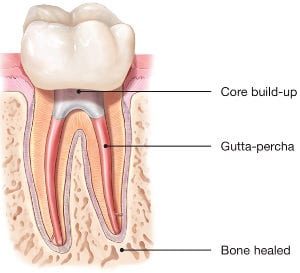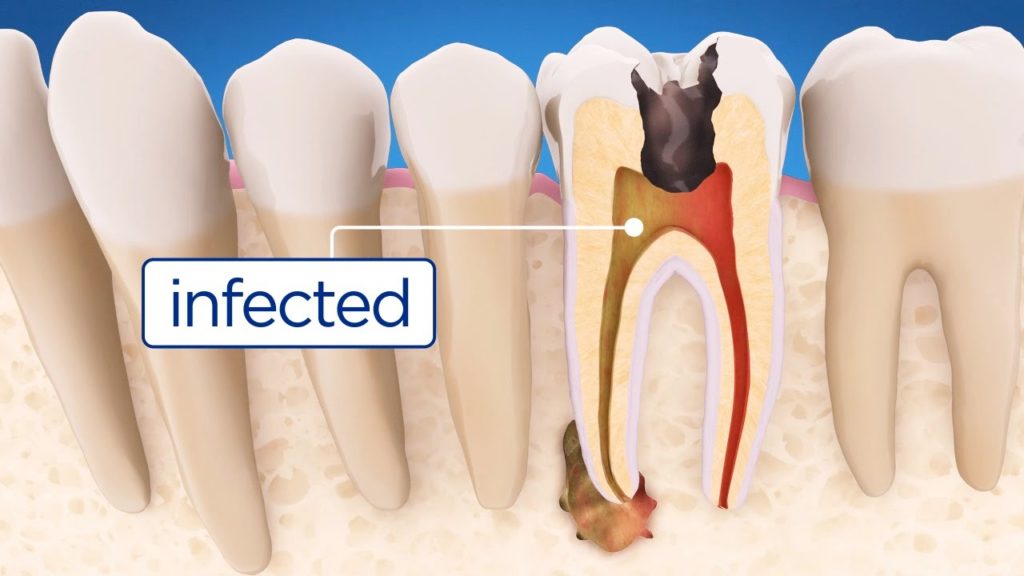The Top 17 Pros and Cons of a Root Canal Treatment and Why You Should Always Opt For One
What Is Root Canal Treatment?
Root Canal Treatment is a procedure to preserve a tooth that is decayed. The process involves removing the infected pulp and nerves, and cautiously cleaning the inside of the tooth; after which, it is then packed and sealed with a rubbery substance called gutta-percha. This procedure varies in cost, depending on the local dentist – yet, in general, it is relatively inexpensive.
What Causes the Need for Root Canal Treatment?
Generally, a tooth’s nerves and pulp can become inflamed and infected by the following:
- Deep decay
- Repeated procedures or large fillings in a tooth
- Chip or crack
- Trauma to the face
The Root Canal Process
The lengthy process of a root canal requires one or more office visits. The procedure goes as follows:
- Firstly, x-rays are taken to check the shape and condition of the root canals and to establish if, and where, there are any signs of infection around the tooth and bone. Your dentist will apply local anesthesia, even though in most cases it is unnecessary, as the nerves are already damaged; most do so to make the patient more relaxed.
- Next, a rubber dam is placed to keep the area dry and clear of saliva. Then, an opening is drilled into the tooth to remove the decayed pulp, nerve, and bacteria. This step happens by using a series of root canal files that are placed into the opening to scrape the root canals, with each file progressively increasing in diameter as they work down the tooth. Periodically, water or sodium hypochlorite is used to flush debris from the area.
- Once the tooth is meticulously clean, it can then be sealed. Depending on the situation, your dentist may wait about a week to seal the opening as medication may be necessary inside the tooth if there is an infection. Otherwise, the opening may be sealed the same day of the procedure. If for some reason the root canal is not completed the same day, the outer opening will be temporarily filled between appointments to keep out any debris and saliva that may contaminate the tooth.
- On the following visit, the tooth will finally be filled with a sealer gum and gutta-percha – a natural latex made from the sap of rubber trees.
- Lastly, further repairing of the tooth may be necessary if there was too much decay resulting in a large filling or other weakness – usually a porcelain crown, or post and crown, may have to be placed for added protection and strength; this will allow for the full use of the tooth. This step is a case-by-case course of action that should be discussed by you and your dentist.
Preventing Further Complications
It should be clear that root canals are not entirely risk-free, but, with no intervention, the tooth will only worsen. It is likely that this can turn into a serious condition – such as causing the tooth to abscess, resulting in moderate to severe pain, and oral-bone degeneration, leading the affected tooth to extraction; this, then, can present a series of aesthetic, financial, and, more importantly, functional issues.
Therefore, your dentist may advise that you have root canal treatment to attempt to keep your tooth; however, this is not saving the tooth, as it is already infected and dying. Nonetheless, a root canal is more desirable, rather than wholly replacing the tooth with an implant.
An abscessed tooth can cause:
- Throbbing pain that gets worse with time
- Pain when you chew or bite
- Pain that flows into your jaw, neck, and ear
- Your gums to swell
- Your face to swell and redden
- Tender, swollen lymph nodes in your neck and jaw
- Tooth sensitivity
- Fever
- Foul breath
Advantages of Root Canal Treatment
The following are compelling reasons not to put off root canal treatment:
- Relief from debilitating pain and discomfort.
- Avoiding an abscess, the spread of infection, and damage to the oral bone.
- Prevention of infection spreading is crucial as it can become a serious condition.
- It is less painful than tooth-extraction, which will leave a gap if not replaced with an implant.
- The gap will need to be replaced with an implant so that you may continue to bite and chew properly.
- It’s a more affordable alternative to replacing the tooth with an implant.
- After the initial discomfort of getting used to a crown, it is more cosmetically appealing because it’s natural-looking.
- Having a gap in your teeth will cause them to shift, changing your bite which may become uncomfortable. It may even cause Temporomandibular Joint syndrome (TMJ) and occlusion issues.
- No implant will look, feel, or function as well as your tooth.
In short – the simplest, but, most important reason to get a root canal instead of extraction is that you get to keep your tooth. Though it may be dead, this method is still beneficial as this allows you to continue to eat and speak as you usually do, since removing the tooth can affect both.
Disadvantages of Root Canal Treatment
Likewise, there are also disadvantages to the procedure, like:
- There is no one hundred percent guarantee that a root canal will be thoroughly clean.
- If the dental restoration is inadequate, it may breed an infection, which would then require antibiotics and analgesics.
- Since the tooth will become hollow, it will be brittle and prone to fractures.
- After this treatment, the tooth will need reinforcement with a porcelain crown or post, or both.
- This procedure then turns into a more significant expense.
- It requires multiple visits and long time-frames of work.
- It may cause discomfort to the mouth and jaw, as it will remain open for the necessary length of time.
- After the procedure, the tooth may discolor or darken.
The bottom line is, as in any medical procedure, it has its risks: Sometimes root canal treatment is not successful, and may require further treatment such as endodontic surgery to try and preserve the tooth; the most common of these being an apicoectomy – the removal of the end of the tooth root.
Things to Ask When Considering Root Canal Treatment
With all procedures, you must always make a well-informed decision by asking essential questions, like:
- Is it possible that the tooth will recover without intervention?
- Is it necessary to have a root canal?
- Why did the pulp and nerves die or become infected?
- Are there any other alternatives to treat my tooth?
- What will happen if I leave my tooth untreated?
- Can this infection spread and become dangerous?
- Should root canal treatment be performed explicitly by an endodontist?
Once your dentist has access to the inside of the tooth and has learned new information that may alter the chances of a successful root canal, he or she should, and will, inform you of the current situation before proceeding. You then have the choice to stop the procedure as there may now be the possibility of having a lower success-rate than previously thought – your dentist should only perform root canal treatment if the situation is ideal.
You’ve Decided to Have Root Canal Treatment – Now What?
Leading in various specialties, including Root Canal Treatments, is Dr. Michael Kezian, DDS.
Dr. Michael Kezian graduated from University of the Pacific in San Francisco and obtained his Doctor of Dental Surgery degree from the California State Dental Board that same year. He has been an active member of the American and California Dental Societies.
He is now a successful dentist working in Larchmont Dental Associates located in Larchmont Village. Call his office today to schedule a consultation with the dentist. You can reach the office at (323) 467-2127.
Larchmont Dental Associates
581 N Larchmont Blvd
Los Angeles, CA 90004
(323) 465-2127
References
- Weston Price, Correlation between the health of our teeth – westonaprice.org/health-topics/dentistry/root-canal-dangers
- American Dental Association, Treatment involved in Root Canals – org/~/media/ADA/Publications/Files/ADA_PatientSmart_Root_Canal.pdf
- American Association of Endodontists, Myths about Root Canals – org/patients/root-canal-treatment/myths-root-canals
- National Center for Biotechnology Information, Effect of Lengthy Root Canal Therapy Sessions – https://www.ncbi.nlm.nih.gov/pmc/articles/PMC3429977
- Arthur Kezian, Crowns after a root canal – https://www.drkezian.com/porcelain-crown-after-a-root-canal-treatment


